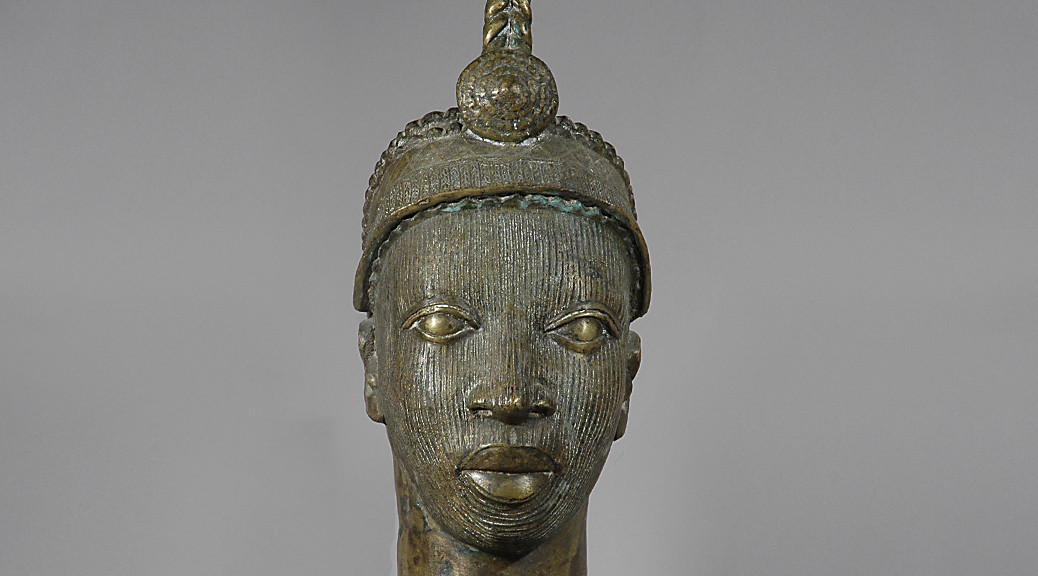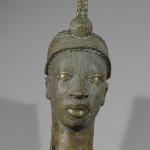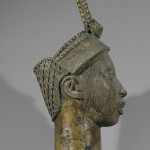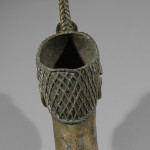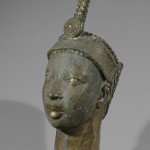CMK 0406-8
Benin Bronze Oba Head, South Central Nigeria
King/queen
H: 52 cm (20,5″), W: 15 cm (5,9″)
Bronze (kobber legering)
This exceptional bronze royal head from Ife (Ile-Ife) acted as effective symbolic expressions of a concept central to Benin life: man’s activities on earth are subject to ancestral will. The living king, or Oba, acting as a priest before the shrine, performed the role of an intermediary between the deceased and the living, and the head served as a vehicle for that exchange by combining memorial and communicative functions in starkly conventionalized form.
A large and very heavy casting, this magnificent piece is in very good overall condition, with a rich, well-developed patina and some oxidization. With a powerful and particularly handsome visage, this bronze head has been beautifully sculpted. The refined facial features, most notably the eyes, eyelids, and lips are wrought with superb detail. The headdress/crown shows excellent detailing, as well.
The Portuguese “discovery” of Benin in 1485 seems to have occurred at the height of Benin’s political power, and the impact of European contact can be seen in terms of religious conversion, assistance in warfare, and the introduction of European goods, including guns and supplies of brass. Originally used to cast cannons, this brass acted as a catalyst on Benin art, as it increased the supplies used in the production of bronze sculpture, the supreme material expression of Benin ideals.
The Kingdom of Benin flourished from the 13th to 19th centuries in southwest Nigeria. Benin culture has long been the focus of attention in the Western world because of the remarkably sophisticated lost-wax bronze castings made by specialist craftsmen for the royal house, which played a variety of functions in court life and ritual.
When the slave trade ended in 1806, the British developed legitimate trading monopolies in Nigeria. The only area that hindered this monopoly was the kingdom of Benin, which remained independent and traded under control of the King, known as the Oba. After attempts to agree terms of trade in 1897, the British sent a military operation against Benin to depose the king through force, known as the British Punitive Expedition. The Oba was deposed and the accumulated works of art from many centuries which adorned the palace were all removed. Over 4,000 royal artworks were taken by the British, and then sold by the British Government to help recover the cost of the expedition. Objects of brass, ivory, coral and wood are now in collections worldwide.
Age: From the period 16th Century AD to 18th Century AD.
Provenance: Bought from a relative of King Ibrahim Njoya, in Cameroon in 1998. Most probably from the Bamun, King Palace collection.
Request price for Bronze Head